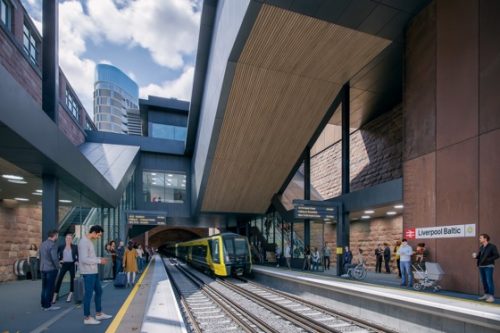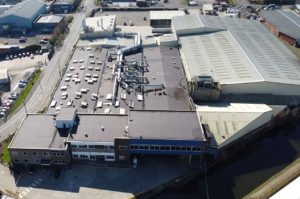Council gives green signal for £100m Baltic train station

Plans for a new £100m train station in Liverpool’s Baltic Triangle have been unanimously approved by Liverpool City Council planning committee.
Councillors discussed and voted on the application in the early afternoon (April 22), following a morning site visit by the committee.
Planning officers had recommended approval for the plans, saying they would deliver a well designed, high quality and highly accessible and sustainable new train station with associated public realm and highway improvement works which would significantly contribute to the regeneration of the Baltic Triangle and surrounding areas by hugely improving public transport connectivity with the rest of the city and the wider Liverpool City Region as well as improving the surrounding highway network including pedestrian and cycling infrastructures.
The application to build Liverpool Baltic station was from the Liverpool City Regional Combined Authority.
The combined authority first mooted the idea of the new station in the summer of 2019 when it was included on a list of potential projects for funding, with the cost then estimated at £50m.
The new station would be on the site of the St James train station which lies in a deep cutting between Central and Brunswick stations.
It was originally opened on March 1, 1874 and closed on January 1, 1917, and has lain derelict ever since.

A CGI of the planned Liverpool Baltic station
The proposals are for a new station building including associated underground platform works, new public realm, such as landscaping and cycle parking, and associated highway improvement works, landscaping and cycle lanes to surrounding streets.
The cutting is bounded by Parliament Street, St James Place, Stanhope Street and Ashwell Street, the latter bridging the cutting.
The railway cutting adjoins a three-storey block of flats, facing Parliament Street, and its car park, as well as a vehicle repair garage to the west, which are accessed via Ashwell Street.
It also adjoins a three-storey residential property to the west with access via Stanhope Street. Stanhope Street also serves a vacant commercial unit, and provides an access into the Cains Brewery Village.
The immediate surrounding area is mainly characterised by a mix of residential, food and drink and business/industrial uses.
To support the new railway station, the proposal includes the creation of a forecourt to the east and south of the station which would be facilitated by redesigning Ashwell Street and restricting vehicular access to Stanhope Street.
Highway improvement works would also be carried out to Ashwell Street, Stanhope Street, Upper Stanhope Street, Parliament Street, Upper Parliament Street, St James Place, Mill Lane and Great George Street, including redesigned junctions, carriageways, pedestrian crossings and footpaths, new cycle lanes, cycle crossings and modal filters, wayfinding, traffic signage and traffic signals as well as new hard and soft landscaping.
The application has been accompanied by a separate full planning application for an associated temporary construction compound for three years, which was also unanimously approved.

St James station
Plans also include a new entrance structure and toilet block and a new outdoor seating area with a pop-up area for food sales at Cains Brewery Village.
Following consultations, 101 letters of objection were received from members of the public raising a range of planning related concerns.
These included the impact on Ashwell Motors as a result of the loss of approximately 25-30 parking spaces along the length of Ashwell Street which it currently uses, resulting in a warning over its closure and job losses. The proposal is to give Ashwell Motors 20 parking spaces.
Other concerns highlighted the impact on traffic and parking in the area, where there is a severe parking problem which will be exacerbated by the new station.
Steve Rotheram, Mayor of the Liverpool City Region said: “This is another step in our vision to build a fully integrated London-style transport system. We’re extending Merseyrail to more communities with future stations already planned in Daresbury, Woodchurch and Carr Mill. I believe good quality public transport is a right, not a privilege.
“Investing almost £100m at the heart of one of the UK’s most vibrant areas will help to make this part of the city more accessible to all while easing congestion and helping us achieve our net-zero targets.”








